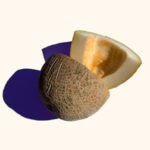melons
Full Belly has been growing melons and watermelons for 30 years, and we constantly try new varieties, changing the mix, striving to find melons that grow well here and taste delicious. We love growing melons and are well known for some of the best melons around. We grow many different varieties of melons, all of them unique in shape and flavor.
We try to make the melon season last as long as possible. In the spring, to get a jump on the season, we transplant baby melon plants into the cold soil. Once the weather heats up, we direct seed our melon. We start harvesting melons in June and depending on the weather, we could have melons through mid-October! See below for a description of many of our melon varieties, plus photos.
Once you've brought your melon home, if you aren't eating it immediately, optimal melon storage depends on the melon type:
- Watermelons should be kept at room temperature (out of direct sunlight) and should not be stored in the refrigerator until right before you are ready to eat them because if they are refrigerated for too long, the flesh gets mealy. They will keep for 7-10 days and should be kept in a cool spot. Note that watermelons do not ripen off the vine.
- Other melons can be stored on the counter for a day or two but if they are very ripe (and we try to harvest our melons as ripe as possible) or you won't be eating it for a days, we recommend storing them in the refrigerator to slow down the ripening process and then bringing the melon to room temperature right before eating.
Once cut, melons and watermelon can be stored in the refrigerator for up to three days, either cut up in a container or left whole and wrapped with plastic wrap (or an eco-friendly alternative). Our favorite way to eat melons is cut in half, remove the seeds (except for watermelon) and then dig in with a spoon.
We really try our best to make sure you get a good melon, but it can be hard to tell from the outside how it’ll be inside. If you find it to be a little lackluster, there are a few ways to help it out. Popular ideas are a small amount of salt (really! Check out this article.), some acidity (lemon or lime juice), or herbs, like mint or basil. Another idea is to chop it into chunks, freeze, and then make a smoothie/slushy with the frozen chunks, potentially also adding a little bit of fresh fruit or juice, sweetener of your choice, and perhaps some herbs, like mint or basil. Melons also make a refreshing juice which can always be turned into popsicles.
Our Melons
Canary: Canary melons have bright yellow skin and a crisp, super-sweet creamy-colored flesh. They don't have much of an aroma, so don't look to that for a sign of ripeness.

Charentais: A French, wonderfully aromatic cantaloupe with a round shape and smooth skin gray-green rind with dark green ribs.
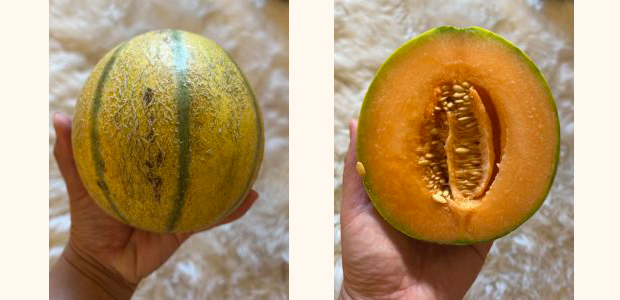
Galia: Galia melons were developed in the 1970s by crossing a honeydew and a cantaloupe variety. It looks like a cantaloupe on the outside and a honeydew on the inside but has its own unique, tropical flavor. It is a very round melon with smooth, netted skin that turns yellow when ripe.
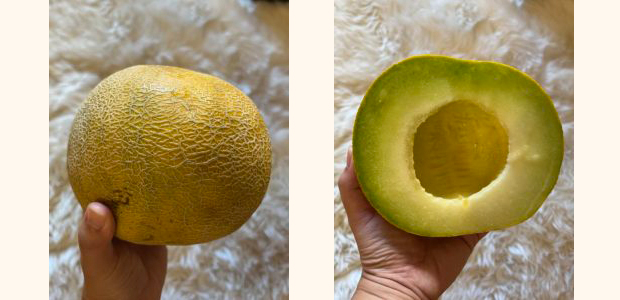
Goddess: Looks and tastes a lot like a cantaloupe - but don't let it trick you! The netting on the skin of a goddess melon is not as raised as that of a cantaloupe and the flesh is softer. Goddess melons have a very fruity flavor and are delicious in smoothies!
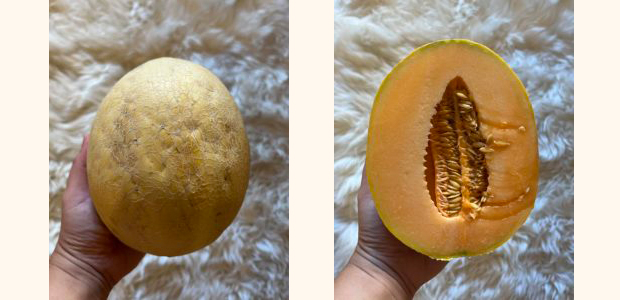
Haogen: thin yellow/green skin with green ribs and a green interior. Unique tropical flavor, strong aroma, and soft flesh.

Honeylope: This honeydew-cantaloupe cross has the pale green skin of a honeydew, orange flesh like a cantaloupe, and a mild but sweet taste and crunchy texture that more closely resembles a honeydew.
 Korean: Yellow on the outside and white on the inside, like a canary melon, but with a firmer, crunchy texture, and they tend to be less sweet.
Korean: Yellow on the outside and white on the inside, like a canary melon, but with a firmer, crunchy texture, and they tend to be less sweet.
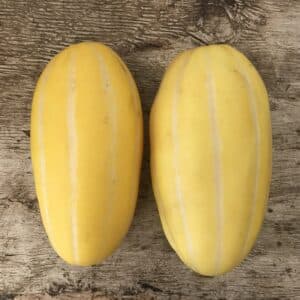
Piel de Sapo: Piel de Sapo means "toad skin" and this melon is also known as a Christmas melon or Santa Claus melon. It has a oblong, football shape with yellow and green speckled skin. The flesh is light green and more crispy than other melon varieties. It doesn't release an aroma when ripe.

Sharlyn: A farm favorite! It is oblong shaped with netted skin. Inside it has flesh that can be ivory, white, or pale orange. They have a fruity and floral aroma with tropical notes and a sweet, fruity flavor and a creamy texture.
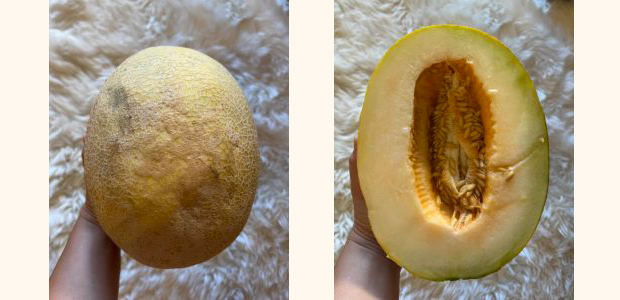
Snow Leopard: This fun honeydew-like variety is relatively new to the farm. They're a smaller melon with a firm texture and sweet, subtly floral flavor.
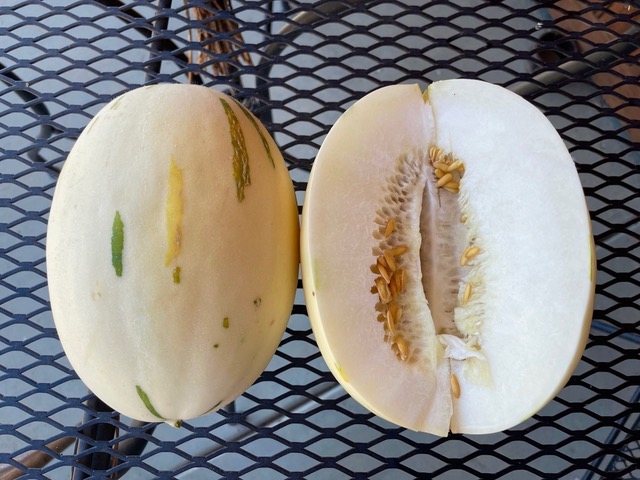
Watermelons: Our watermelons come in all sizes and colors. We only grow seeded watermelon. All are sweet, juicy, and seriously delicious! We currently grow Crimson Sweet, Orchid, Sugar Baby, Yellow Doll, Estrella. Crimson Sweets, Sugar Baby, and Estrellas are red. Sugar Babies (in the photo below) are quite small, Estrellas are large and oblong, and Crimson Sweet are a medium/large oval melon. Orchids (in the photo below) are orange fleshed and Yellow Dolls have bright yellow flesh.
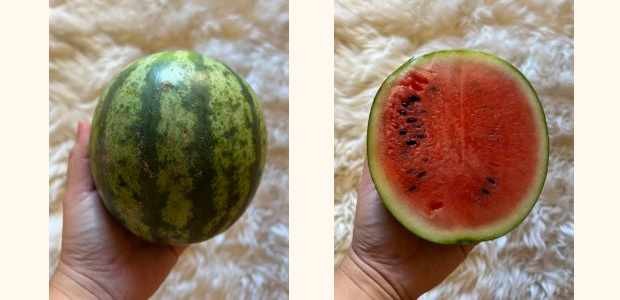

Photo credit (for photos with the furry background): Tanya Tran (@FeedTheThrill)
